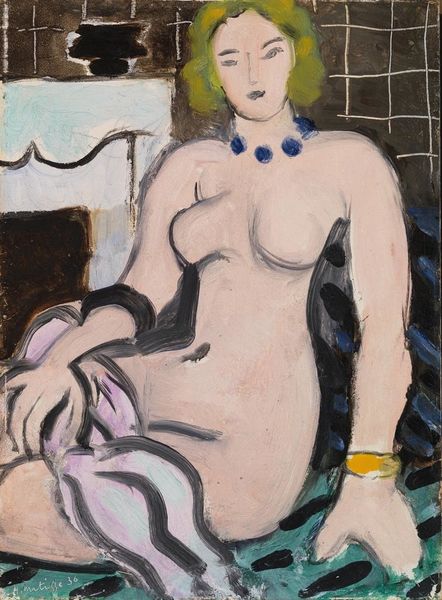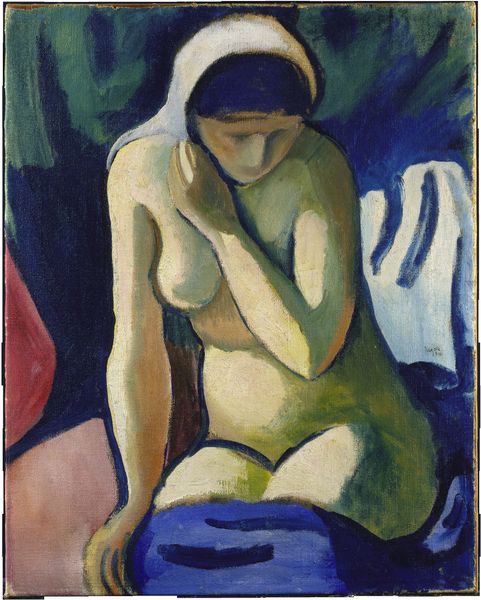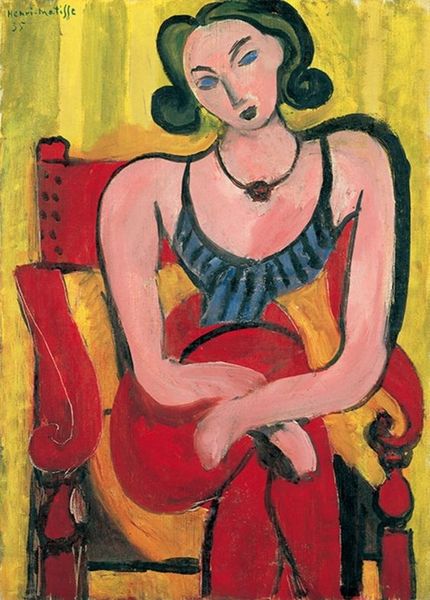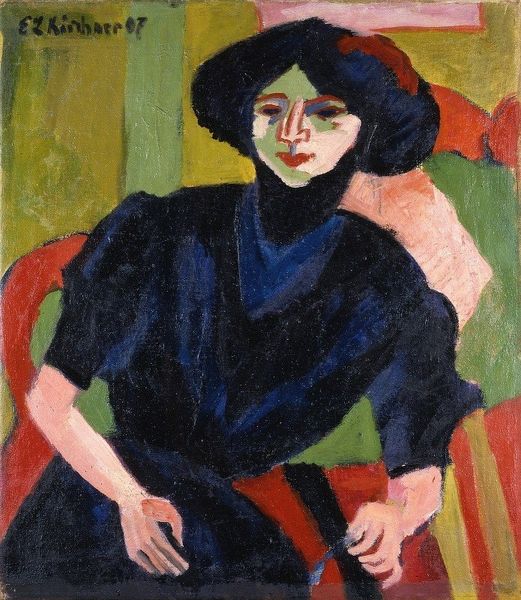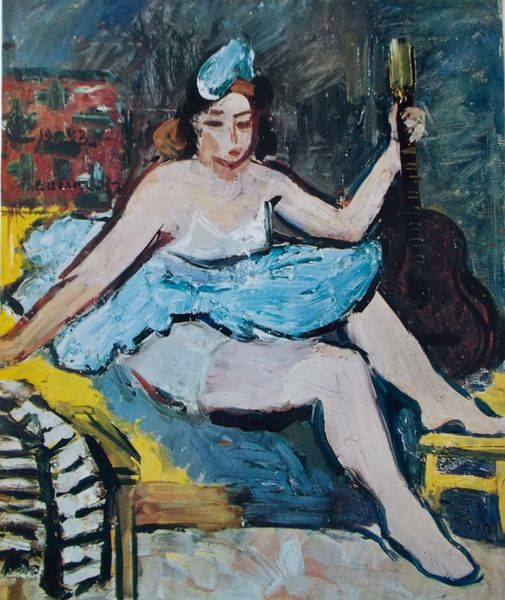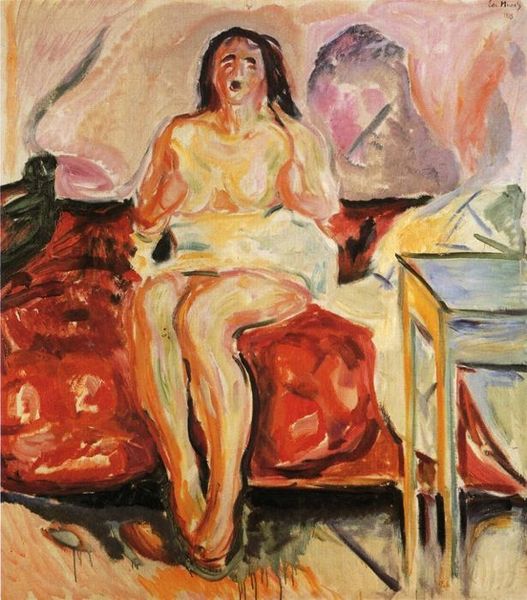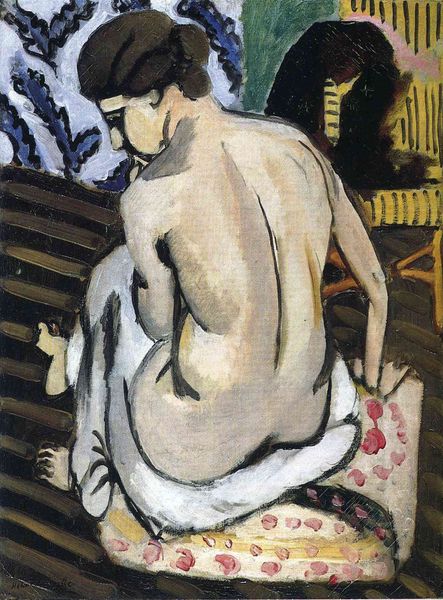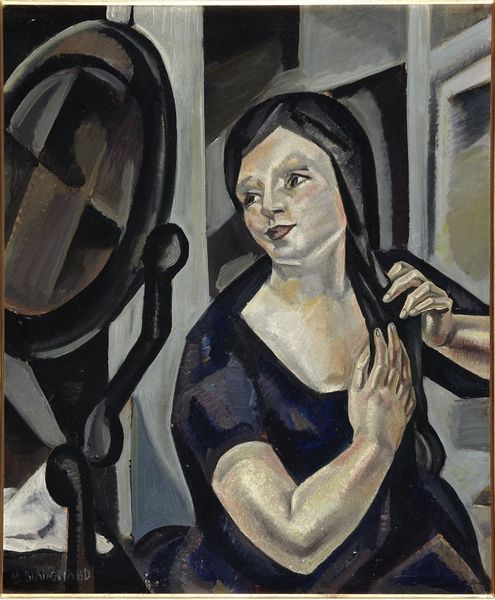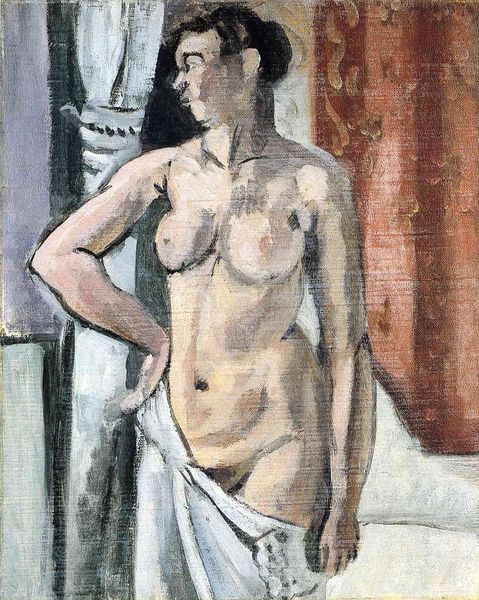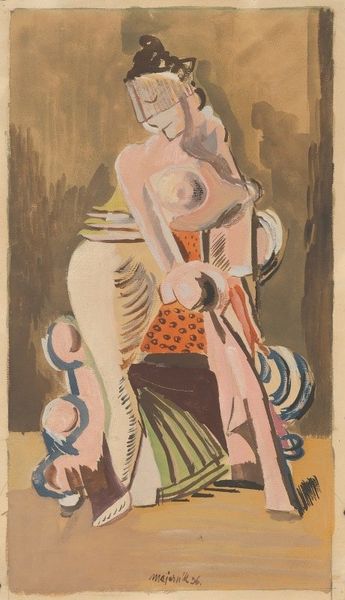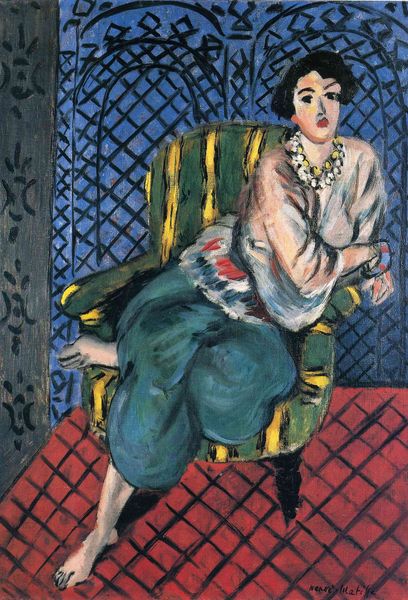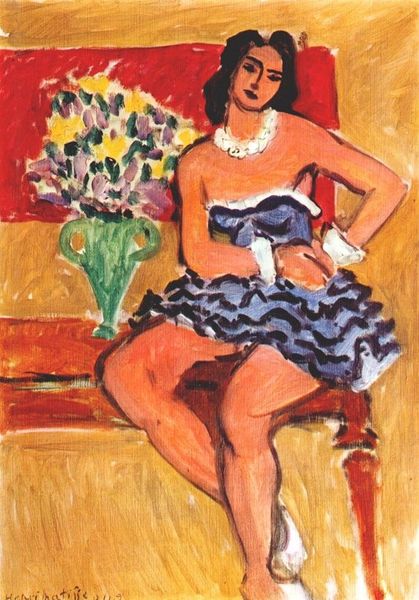
Copyright: Henri Matisse,Fair Use
Editor: This is Henri Matisse's "Ballet Dancer Seated on a Stool" from 1927, painted in oil. It's strikingly direct, even confrontational. I’m curious about that unwavering gaze and wonder what was going through the dancer's mind. What do you see in this piece? Curator: Beyond the surface portrait, I see a representation of resilience and the burden of performance. The dancer's gaze, as you observed, speaks volumes. The stark contrast between the bright tutu and the shadows around her may symbolize the dichotomy between the idealized image of ballet and the physical toll it takes. The dancer's stillness belies the immense energy ballet demands; consider what this juxtaposition might tell us about the dancer’s cultural role and experience. Editor: That’s a fascinating perspective. I hadn’t considered the duality of the bright and shadowed elements, but now it makes so much sense. Curator: Visual elements create a dialogue across generations. Ballet carries rich associations. Do the ribbons around her ankles evoke a sense of fragility, or of the support that enables her art? What of her closed, composed hand gesture: constraint or preparedness? These visual choices tap into centuries of cultural understanding about women in performance. Editor: I originally thought it was just a simple portrait, but you've made me think about all the hidden layers within the symbolism, it gives the work such depth! Curator: Exactly! And by examining the visual vocabulary, we tap into the enduring cultural conversations the artist invites us to join. I find I now look differently at dancers and paintings. Editor: This has really opened my eyes to interpreting art more deeply. Thanks so much.
Comments
No comments
Be the first to comment and join the conversation on the ultimate creative platform.

